Wolverine
M P McFadzen photo
The wolverine (Gulo gulo) is the largest land-dwelling species of the family Mustelidae. It is found in northern boreal forests and in the subarctic and alpine tundra across the northern hemisphere. Wolverine populations have steadily declined since the 19th century due to range reduction, habitat fragmentation and trapping. The wolverine is now essentially absent from the southern end of its range in both Europe and North America, although the Waterton-Glacier International Peace Park provides a bastion within the Crown of the Continent Ecosystem. Wolverine is designated as a Montana Species of Concern and are potentially at risk because of limited and/or declining numbers, range and/or habitat, even though it may be abundant in some areas. Wolverines have a global rank of G4, meaning they are apparently secure though it may be quite rare in parts of its range, and/or suspected to be declining (USFWS 2018).
PHASE 2 DOCUMENTS
CONCEPTUAL MODEL PHASE 2
This conceptual model is intended to convey a situation analysis for the Wolverine (hereinafter referred to as feature) in the transboundary Crown of the Continent Ecosystem. It is a working diagram that captures life history characteristics important to feature persistence as well as key threats and biophysical factors and the relationships among these elements. The model strives to illustrate important cause-and-effect relationships that impact this feature. Together, the model and other analyses are used:
to help stakeholders arrive at a shared understanding of this feature
for discussion with subject matter experts
to develop a spatial design: where do opportunities exist for conservation of the feature on this landscape?
to develop a strategic design: what are the strategies and actions likely to result in long-term persistence of the feature?
Orange Box - Driver: The indirect threats, opportunities, and other important variables that positively or negatively influence direct threats. Also called a “root cause” or “indirect threat,”, drivers are pervasive, underlying anthropomorphic activities or conditions that require policy level interventions to lessen their impact on landscape features.
Pink Box - Direct Threat: Human actions (e.g., overfishing, urban development) or natural phenomena (e.g., wildfire) that immediately degrade one or more landscape features. Natural phenomena are considered direct threats when their relative impact is increased by human activities.
Red Chip: Indicates a ‘high’ level threat to the landscape feature, as identified by subject matter experts. These threats are carried over to spatial design optimization models if reasonable spatial data is available.
Yellow Chip: Indicates a ‘lower’ level threat to the landscape feature, as identified by subject matter experts. This is not to say these direct threats are not significant; rather the urgency/importance of addressing these threats are secondary to high threats.
Tan Box - Biophysical Factor: represent any factor (including, but not limited to traditional stresses) that connect a driver or direct threat to a focal landscape feature. They are used to show the mechanism of how drivers and direct threats affect a landscape feature(s).
Rounded Green Box - Landscape Feature: Ecological (e.g., species, community, ecological process) and Cultural (e.g., land access) elements that represents biodiversity or human well-being needs found in the Crown of the Continent LCD project area. Landscape Features are the units around which we set goals, carry out conservation actions, and measure conservation effectiveness. Landscape Features are selected by the LCD Leadership Team as representatives of broader Cultural and Ecological elements of the Crown landscape: we do not identify selected as ‘priorities’ or ‘surrogates’ but rather measurable units that are important to all stakeholders.
Green Ovals - Key Attribute: Attributes of landscape features that are important to the feature’s long-term persistence. Attributes are intrinsic values of the feature but also represent attributes we can measure and map and therefore provide opportunities to develop conservation strategies around.
Black Arrows: show the influence over or relationship that each factor has to other factors. Some drivers may affect or influence other drivers and/or more than one direct threat. Likewise, a direct threat may affect >1 other threat, landscape feature or key attribute of a feature. Arrows inform on critical relationships among landscape elements and potential paths along which to develop strategic approaches for conservation intervention or investment.
— Following the Conservation Standards (formerly Open Standards for the Practice of Conservation)
Citations
Inman, R.M., Magoun, A. J., Persson, J., Mattisson, J. (2012). The wolverine’s niche: linking reproductive chronology, caching, Journal of Mammalogy, 93(3):634-644.
Krebs, J., Lofroth, E., Copeland, J., Banci, V., Cooley, D., Golden, H., Magoun, A., Mulders, R., Shults, B. (2004). Synthesis of Survival Rates and Causes of Mortality in North American Wolverines. The Journal of Wildlife Management, Jul. 2004. Vol.68, No. 3, pp493-502.
Krebs, J., Lofroth, E. C., Parfitt, I. (2007). Multiscale Habitat Use by Wolverines in British Columbia, Canada. The Journal of Wildlife Management, Sept 2007, Vol. 71, No. 7, pp 2180-2192.
Copeland, et al. 2010. The bioclimatic envelope of the wolverine (Gulo gulo): do climatic constraints limit its geographic distribution? Aubry, K.B., McKelvey, K.S., and Copeland, J.P. 2007. Distribution and broadscale habitat relations of the wolverine in the contiguous United States
Carroll, C., Noss, R.F. and Paquet, P.C. (2001), CARNIVORES AS FOCAL SPECIES FOR CONSERVATION PLANNING IN THE ROCKY MOUNTAIN REGION. Ecological Applications, 11: 961-980. https://doi.org/10.1890/1051-0761(2001)011[0961:CAFSFC]2.0.CO;2
PHASE 2 OPTIMIZATION MAP (DRAFT)
This draft map represents a spatial optimization approach to identify conservation opportunity for the identified feature. Input data for the feature include estimates of occurrence, density or habitat affinities, and data describing high-level threats. The 30% and 70% optimization targets represent the range of plausible conservation objectives for the feature. These targets will be refined at stakeholder workshops during Phase 3 of the LCD process. Optimization models are developed using Marxan software.

